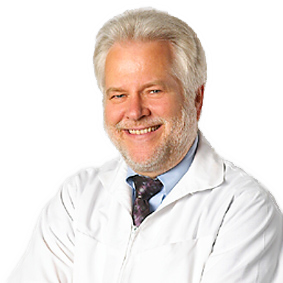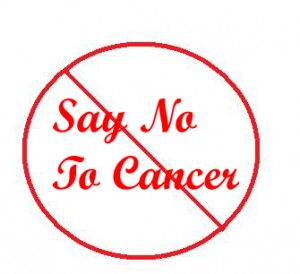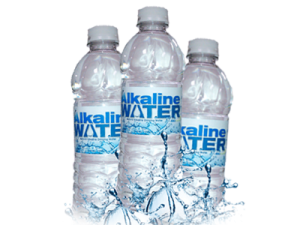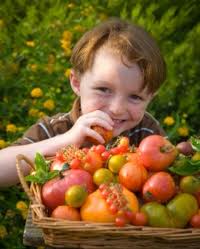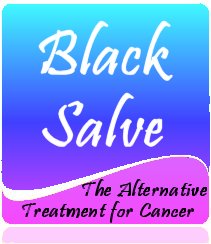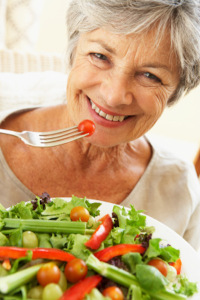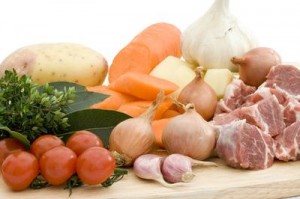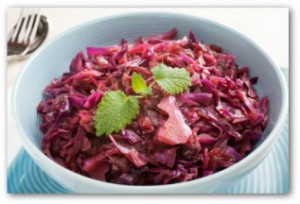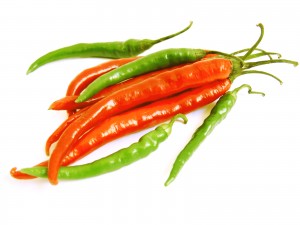BREAST CANCER
When we’re talking about breast cancer we want to look at basic issues that can adversely affect the breast. One of those is a bra that is not fitted properly and is too tight studies have shown this can lead to more breast disease, also bra with wire support have been suspected as well. The breast, due to granular activity have a lot of turnover and so lymph drainage is important which is enhanced by exercise, particularly arm exercises and plenty of fluids.
Fluid needs are based on body weight, one half of your body weight in ounces is considered a cleansing dose of fluids 80% of that is considered the minimum dose. For a 100 pound person that would be 50 ounces as cleansing and 40 as minimum. Estrogen balance is crucial because a high estrogen to progesterone ratio can promote breast cancer and other breast disease. A high-fiber diet can help control estrogen by improving the elimination of estrogen after it has been conjugated by the liver and dumped out through the bile into the colon. If you're constipated and thus have a longer than normal route time for things to move to the colon then the bacteria in the colon will release the estrogen back into the system causing an excess estrogen affect. Flax powder and soy products have a modulating effect on estrogen. Soy has gotten a bad name due to these substances within soy that have an estrogen or hormonal effect on a cell. But this effect is said to be 40 to 50% less potent than estrogen produced by the body. So it has a buffering effect on the cells and thus a protective effect. Again these substances are found in both soy and flax powder.
When we talk about cancer it's important to understand that cancer develops in a Pro inflammatory chemistry. One way to reduce inflammation is to eat a diet based on your body type. In most of the recommendations in this publication when it comes to food recommendations it should be modified based on your body type. For instance if you have a protein body type then being a vegetarian to try to fight the cancer could be counterproductive.
We have a list of anti-inflammatory foods that you can request. Talking about inflammation, body pH is important. And to understand body pH then evaluating urine pH will give insight on if your system is too acidic (Pro inflammatory) are two alkaline (Pro degeneration) and by requesting a food pH list you can modify your body's pH. Because Pro inflammatory and an acid pH go together, then drinking alkaline water can be helpful. Putting lemon or lime in your water, even though the juices acid to the tongue, once it goes through the digestive process it has a strong alkaline effect on the body. Two lemons or three small limes per quart of water is a good pH balancing drink if your system is too acidic. Urine pH should be 6.4.
Black salve appears to be a great alternative to more radical surgical approaches and you can view several YouTube videos by just googling it.
Below you'll find dietary recommendations to help improve your immune system and biochemistry to enhance your body's defenses against cancer.
A plant-based diet. A recent study suggests that women who eat lots of fruit, veggies and legumes, and little red meat, salt and processed carbohydrates may lower their odds of developing estrogen-receptor negative breast cancer, which accounts for about a quarter of all breast cancers. And a study published in the American Journal of Epidemiology found that the likelihood of the cancer was 20 percent less when women followed such a diet.
Red, yellow and orange fruits and veggies. In December, researchers at Harvard Medical School said that women with higher levels of carotenoids, or nutrients found in fruits and veggies, have a lower risk of breast cancer, especially cancers that are more difficult to treat and have a poorer prognosis. Smart choices include carrots, sweet potatoes, spinach, kale, red peppers and winter squash. The study was published in the Journal of the National Cancer Institute.
- Consuming walnuts slowed the development and growth of breast cancer tumors in mice, according to a study published in 2011 in Nutrition and Cancer. Study author Elaine Hardman, a professor at Marshall University's Joan C. Edwards School of Medicine, looked at the effect of a diet containing the human equivalent of 2 ounces of walnuts a day (25 to 30 walnut halves). After 34 days, mice that ate walnuts had less than half the rate of breast cancer as a control group on the same diet minus the walnuts. The number and size of tumors also were significantly smaller for the walnut group. The study authors speculate that walnuts' anti-inflammatory properties are the reason.
Cutting back on alcohol. Even a moderate amount of alcohol is "clearly linked" to an increased risk of breast cancer, according to the American Cancer Society. Compared with non-drinkers, women who have two to five drinks a day are at least 50 percent likelier to develop the disease. If you have to drink, stick to a glass of wine (5 ounces), a shot of liquor (1.5 ounces) or a bottle of beer (12 ounces) a day.
Cabbage and sauerkraut. Researchers at Michigan State University found that people who ate raw or lightly cooked cabbage and sauerkraut at least three times a week were 72 percent less likely to develop breast cancer than those who had it twice or less. High levels of glucosinolates – compounds found in cabbage – may be responsible.
Phytochemicals are nutrients found in plants. Some phytochemicals have been studied for their cancer-fighting benefits and their ability to prevent cancer from coming back.
- Soy. Soybeans contain phytoestrogens. These are nutrients similar to the estrogen in your body. Soybeans (also called edamame), tofu, soy milk, and miso soup contain phytoestrogens. Some researchers think they can help protect against the kind of breast cancer that depends on estrogen for its growth, but others don't. Ask your doctor whether eating one to three servings of soy foods a day would help you. It's possible it may interfere with hormone therapy or some other treatment.
- Antioxidants. Many vegetables, fruits, nuts, and other foods contain antioxidants. Foods with antioxidants include broccoli, liver, and mangoes. Antioxidants protect your cells from damage. Dietitians say you should eat a balanced diet with a variety of fresh foods to get antioxidants. That's better than taking megadoses insupplements.
- Beta-carotene. Beta-carotene gives carrots, apricots, yams, and other vegetables and fruits their orange color. Some studies that suggest that a diet high in beta-carotene-rich foods may lower the risk of dying from breast cancer.
- Lycopene. Lycopene is what puts the red in tomatoes and the pink in pink grapefruit. It might also help prevent recurrence of breast cancer.
Eat Your Cancer-fighting Vitamins.
12 foods to fight cancer:
One of the easiest things for a person touched by cancer to address is their diet. Here are 12 foods that can each play a role in fighting one or more steps in the multi-step cancer process.
Remember that ´good nourishment´ is a crucial weapon in the fight against cancer and any illness. Good cancer nutrition can be vital in increasing your personal odds of survival.
Remember too that natural compounds are likely to do you a lot more good than synthetic pills! So here are a few additions to your cancer diet, as a part of your own Integrated Cancer Treatment Programme.
1: Oily Fish
Fish oil will provide long chain omega-3, a powerful anti-inflammatory in the body that minimizes COX-2 and its abilities to drive localized negative hormones called eicosanoids which inflame and irritate. Omega-3 has been shown to re-lengthen telomeres, which shorten when you have cancer putting the DNA structure at risk, and reducing longevity. Oily fish also contain vitamin A, an important vitamin in the fight against cancer (herring, mackerel and salmon are top of the list). Fish oils have been linked to reduced levels of prostate, breast and colon cancer. Research shows they help prevent cachexia when having chemotherapy. You´ll also get a little vitamin D from them, another proven cancer-fighter.
2: Carrots
Along with apricots, peppers and pumpkins, they provide cancer carotenoids like beta-carotene, which converts to vitamin A, when required by the body. 1 cup of carrot juice, 2 sweet potatoes, 16 dried apricots and 4 cups of red cherries will each provide 25mgs. Don´t eat them all at once - people have been known to turn a little orange! A great juice to make yourself involves carrots and apples (for quercitin) and beetroot (for anthocyanins). A real cancer fighting drink! Carotenoids are also found in natural food sources such as chlorella.
3: Red and Yellow Peppers
The top source of vitamin C in the UK - even better than oranges. Vitamin C strengthens your immune cells and neutralises toxins. Linus Pauling thought cancer patients should consume 2 to 10 gms per day. A large red pepper is 250 mgs. 200 gms raw broccoli 175 mgs. 150 gms papaya 90 mgs. An orange 65 mgs. Berries and cherries are great sources. Red and yellow peppers are also good sources of carotenoids.
4: Sunflower Seeds
High in zinc and vitamin E. Zinc helps vitamin C do its work and accelerates healing time. It is important to a healthy prostate. You need 15 to 25 mgs per day. Five tablespoons of sunflower seeds give you 10 mgs. Best are oysters, 3 are enough. Milk can block zinc absorption. Sunflower seeds will also provide a little selenium.
Pumpkin Seeds
Can be mixed with the sunflower seeds in your morning muesli. 5 tablespoons will each provide 20 mgs of vitamin E, the ultimate cancer buster, which inhibits cancer cell growth and protects immune cells from free radicals. Vitamin E boosts your immune system´s fighting abilities. The target is 300-600 mgs and is difficult to achieve without supplements. Green vegetables, soya and almonds are also good sources.
5: Brazil Nuts
Six cracked nuts will give you your daily selenium; 100 to 200 mcgs is the goal. Selenium is a very potent anti-cancer agent. Eight slices of wholemeal bread, an organic egg, or a large chicken breast will also be enough.
Tuna, onions, broccoli and tomatoes contain selenium too.
6: Mushrooms
There´s an enormous body of research evidence now that shows how ´medicinal´ mushrooms (Shiitake, Maiitake, cordyceps etc) boost the immune system and fight cancer. Even the button mushroom has cancer fighting ingredients. We have a great review on medicinal mushrooms
7: Tomatoes
Seven to ten helpings per week, especially cooked.
According to Harvard research 7-10 helpings a week cuts prostate symptoms by 40% and has an influence on many cancers e.g.: lung; colon; cervix; breast. Lycopene is the prime active ingredient, and 25 - 40 mgs the desired daily dose.
It is also found in strawberries, peppers, carrots and peaches, but one tin of tomato soup has 65 mgs alone. Lycopene helps reduce ´bad´ fat levels in the blood stream and is a strong antioxidant.
8: Egg Yolk
Along with green leafy vegetables, avocado, beans, carrots, apricots and pumpkins, egg yolk will give you folic acid.
This will help your DNA to replicate properly and protect it during radiotherapy.
400 micrograms is a recommended amount. Folate, biotin, niacin and vitamin B6 are all B vitamins that help in the cancer fight. Egg yolk, greens and whole grains are the best sources.
9: Broccoli
And other green cruciferous vegetables e.g. cabbage, kale, Brussels sprouts, contain fibre which helps eliminate toxins
Moreover, the fibre is rich in galactose, which binds to damaging agents in the intestine.
Cruciferous vegetables also contain indoles, and especially indole3carbinol which, along with its metabolite DIM, modifies and diminishes aggressive oestrogen action, can modify cellular oestrogen receptor sites, and aids in fighting oestrogen-driven cancers like some breast, prostate, brain and colorectal cancers.
I3C and DIM were also found to have action in non-oestrogen driven cancers as they can also affect thep27 cancer pathway.
Finally, sulphorophane in broccoli and especially sprouting broccoli seeds helps the liver detoxify, and reduces stomach cancer tumours.
10: Garlic
It is a truly wonderful food. It seems to act to stop the spread of cancer in a number of ways, for example by stopping blood supply forming for tumours.
Garlic has a number of active ingredients. It contains selenium, tryptophan and sulpher based active agents that attack cancer cells.
Two or three raw cloves of garlic per day will ward off more than vampires.
11: Beetroot
And cherries, aubergines, red grapes - indeed any purple coloured fruits and vegeatables. They contain anthocyanins (and sometimes also resveratrol). Anthocyanins have been shown to kill cancer cells; resveratrrol has research supporting its role in fighting certain cancers like blood and brain cancers too.
12: Pulses
Lentils, chickpeas, beans and even soya etc. are a great source of fibre and protein without the animal fat.
Pulses also contain isoflavones, phytoestrogens. People get confused about plant oestrogen. The cells of your body have oestrogen receptor sites. When one form of human oestrogen (oestradiol) binds to them, the result is havoc inside your cells. About 40 times less potent is human oestrogen oestrone and about 40 to 50 times less potent still are plant oestrogens. Now which would you rather have sitting on your receptors? Pulses also provide fibres like lignans that can help neutralise free-radicals in the gut and blood stream.
- Pulse:
Pulses are part of the legume family, but the term “pulse” refers only to the dried seed. Dried peas, edible beans, lentils and chickpeas are the most common varieties of pulses. Pulses are very high in protein and fibre, and are low in fat. Like their cousins in the legume family, pulses are nitrogen-fixing crops that improve the environmental sustainability of annual cropping systems.

Pulses are a great tasting addition to any diet. They are rich in fibre and protein, and have high levels of minerals such as iron, zinc, and phosphorous as well as folate and other B-vitamins. In addition to their nutritional profile and links to improved health, pulses are unique foods in their ability to reduce the environmental footprint of our grocery carts. Put it all together and these sensational seeds are a powerful food ingredient that can be used to deliver the results of healthy people and a healthy planet.
Pulses come in a variety of shapes, sizes and colours and can be consumed in many forms including whole or split, ground in to flours or separated into fractions such as protein, fibre and starch.
Pulses do not include fresh beans or peas. Although they are related to pulses because they are also edible seeds of podded plants, soybeans and peanuts differ because they have a much higher fat content, whereas pulses contain virtually no fat.
Eat pulses every two days.
Fruit
Apple
Avocado
Black raspberries
Blackberries
Blueberries
Cactus Pear
Cantaloupe
Cherries
Clementines
Coconut
Cranberries
Currants
Grapefruit
Kiwi
Kumquat
Lemon
Lime
Lingonberry
Mandarin oranges
Mango
Nectarines
Orange
Papaya
Peach
Pears
Persimmon
Plums
Pomegranate
Pumpkin
Raspberries
Red grapes
Strawberries
Tangelos
Tangerines
Tomato
Herbs & Spices
Basil
Black pepper
Cardamom
chive
Cilantro
Cinnamon
Cloves
Curry
Galangal
Garlic
Ginger
Ginseng
Lavender
Licorice root
Mint
Nutmeg
Onion
Oregano
Parsley
Peppermint
Rosemary
Sage
Sesame seeds
Tarragon
Thyme
Turmeric
Vegetables
Artichoke
Arugula
Asparagus
Beets
Belgian endive
Bell pepper
Bok Choy
Broccoli
Brussel sprouts
Cabbage
Capers
Carrots
Cauliflower
Celery
Chard
Chicory
Chinese chives
Collard greens
Eggplant
Escarole (Categories: Endive)
Fennel
Garlic
Green beans
Kale
Kohlrabi
Lettuce
Mustard greens
Olives
Onion
Parsnips
Peas
Pumpkin
Radishes
Salsify
Scallions
Shallots
Soybean Sprouts
Spinach
String Beans
Sweet potato
Thistle
Tomato
Turnip
Watercress
Winter squash
Zucchini
Oils & Sauces & Condiments
Cocoa powder
Honey
Maple syrup
Olive oil
Olive paste
Red wine vinegar
Sesame oil
Soy sauce
Squid ink
Tomato sauce
Vanilla extract
White wine vinegar
Seafood
Anchovies
Cuttlefish
Flounder
Haddock
Halibut
Herring
Mackerel
Mussels
Oysters
Salmon
Sardines
Sea cucumber
Seaweed
Shrimp and Prawn
Squid
Squid ink
Trout
Tuna
Meat Products
Chicken dark meat
Goose (dark meat)
Turkey dark meat
Legumes & Nuts & Beans
Almonds
Broad bean
Cashews
Chestnut
Chickpeas
Edamame
Fava beans
Hazelnuts
Lentils
Lima beans
Miso
Natto
Peanuts
Pecans
Pine nuts
Pistachios
Sword jackbean
Tofu
Walnuts
Grains & Seeds & Flours
Black rice
Brown rice
Fennel seed
Flaxseed
Oats
Poppy seed
Pumpkin seed
Quinoa
Sesame seeds
Sunflower seed
Wheat
Whole grains
Beverages & Soups
Apple cider
Black tea
Carrot Juice
Cocoa powder
Coffee
Green tea
Miso
Orange juice
Red wine
Soy milk
White wine
Dairy
Hard cheese (Gouda, Jarlsberg, Emmenthal, Edam)
Yoghurt
Sweets
Chocolate
Cocoa powder
Honey
Maple syrup
LINK: breast cancer overdiagnosis

